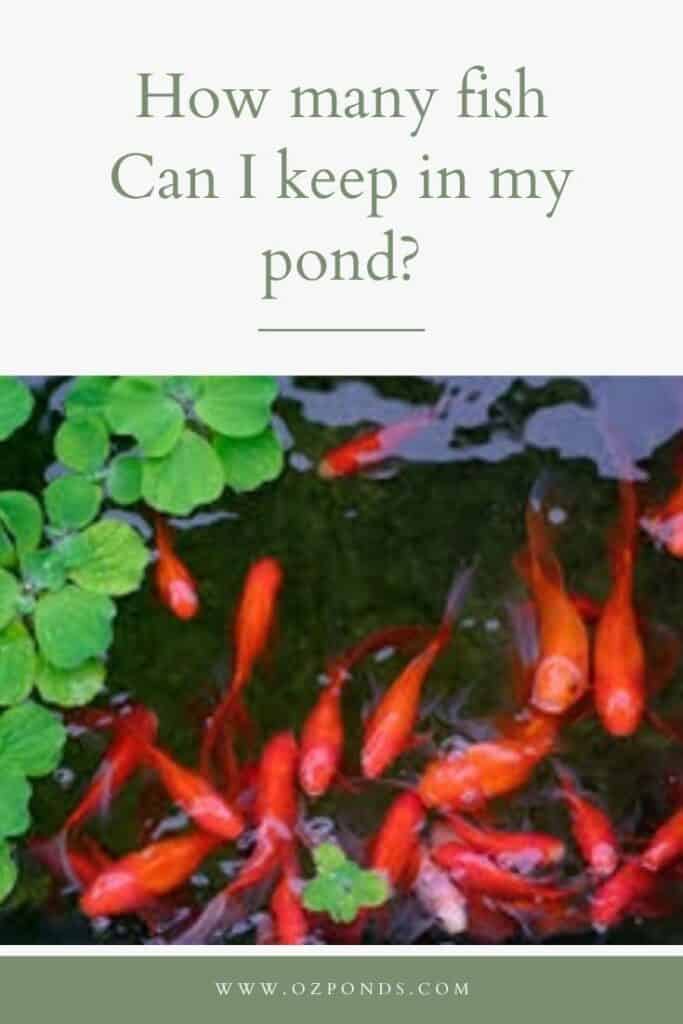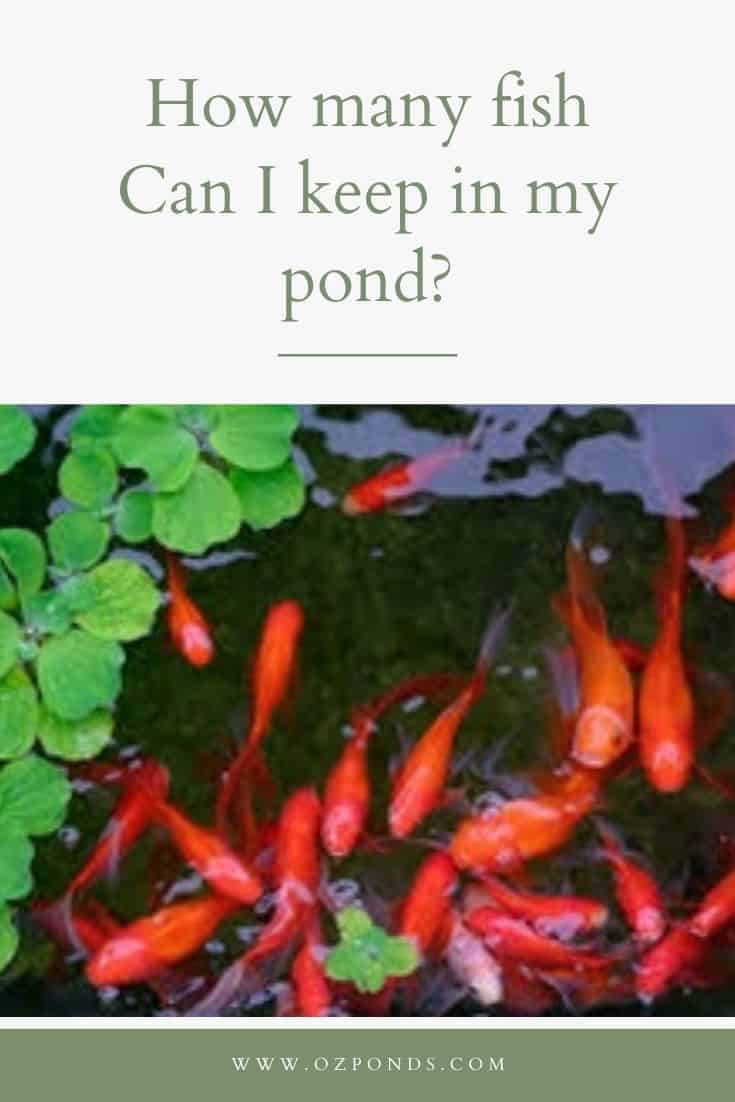It’s always an exciting thing to stock your first backyard pond with fish.
So a common question I get is “how many fish can I put in my pond?”.
Of course every pond is different but I’ll attempt to give you some good guidelines to work with:
| Fish type | 150 Litre (40 gal) pond | 500 Litre (130gal) pond | 1000 Litre (260gal) pond | 5000 Litre (1300 gal) pond |
| Koi | None to small | None to small | 1 | 5 |
| Goldfish & Shubunkins | 1 maybe 2 | 5 | 10 | 50 |
| Small schooling fish | 10-20 | 50-100 | 150-200 | 750-1000 |
| Predatory fish | 1 dependant on size. | 1 | 1 | 3-5 with plenty of hiding areas |
Broad numbers.
Let’s talk numbers. I personally like to allow 100 Litres (40gal) per goldfish. This is a general rule I use mostly for gold fish, which is the most commonly sold pond fish here in Australia.
Smaller fish like White clouds, guppies or galaxias can be kept in denser numbers. Let’s say 4-10 fish per 100 Litres.
Note: The reason for the wide range of fish per litre is every filter is different. Some ponds have no filters while others have amazing filtration. Click here to read about the best way to filter a pond.
Another factor is that all fish will eventually grow to different sizes. Just because the fish are only an inch or two now doesn’t mean they will stay that way!
A simple way to work out how many fish you can have in your pond is 3cm of fish for every 10 litres of water. So work this out at the fully grown size of the fish!
You might get a gold fish that’s only 5cm long, but it will eventually grow to 20-30cm long.
Other things to be aware of. Some fish like bass are territorial and shouldn’t be kept in dense numbers, plus they will eat other fish.
I always like to keep my ponds under stocked to allow the fish to breed and find their own balance within the pond ecosystem.
It’s also important to have plenty of biological filtration to allow for fish growing in size or numbers.
Adding more biological filtration.
Biological filtration is basically the amount of surface area available for beneficial bacteria to colonise.
Beneficial bacteria are the backbone of any water environment. If you want to learn more about beneficial bacteria and the nitrogen cycle you can click here to read my article on the subject.
Allowing as much water as possible to pass through or over rocks, bio balls, ceramic noodles or any other filter media will allow you to have a healthier water but also a more densely populated pond(more fish!).
There are many ways to add biological filtration to an existing pond. My 2 favourites are bog or wetland filters and slow moving streams.
Both work in much the same way- by allowing water to pass slowly through rocks and gravel, that is full of the good bacteria.
The wetland, bog or stream is also planted with lots of aquatic plants that will help remove excess nutrients from the water.
This video shows how I built a small 100 Litre wine barrel pond. It started with 7 white clouds.
As I’m writing this there is about 25 living and breeding in there. This is because the bog filter above the pond is so effective.
Plenty of plants.
As I just touched on plants are great at removing nutrients from the water. Nitrates particular, nitrate is a by product of the ammonia that fish produce.
Using plants in your pond is by far the best and easiest way at removing the nitrate from the water. Without plants you may need to perform water changes to keep the nitrate levels in check.
I do have a list of 40 awesome pond plants if you want to check it out.
The roots of the plants will also provide more surface area for beneficial bacteria. Plants are also perfect spawning grounds.
Young fish (fry) are able to hide in amongst the plant foliage and roots. Even adult fish will benefit from the cover the plants provide when any predatory birds come along.
Another big benefit that plants have is that some will add oxygen into the water.
Oxygen
Oxygen is very important for the fish and also the pond ecosystem. The bacteria that is the backbone of the pond ecosystem needs oxygen! Without oxygen dead zones (anaerobic) form.
Adding oxygen into a pond can simply be a fountain or waterfall. You can also use air pumps. Ponds without a pump or air stones will need to be heavily planted to allow plenty of oxygen into the water.
Remember to keep the pump running 24/7. Pond pumps are made to run constantly and there are many energy efficient models available!
This ensures good water movement and a consistent supply of oxygen.
If you’re worried about the cost of running a pump 24/7 you may be surprised that they cost less to run than you think.
Check out my article on how much it costs to run a pond pump.
Create a true ecosystem
Of course we all want to get to see lots of fish in the pond, and by utilising the above strategies your really creating a thriving ecosystem!
Selecting compatible fish species will also help to create a harmonious pond ecosystem.
What I’m talking about is adding fish, crustaceans, turtles and even fresh water mussels that will form a nice balance.
For example fish will eat mosquito larvae, the fish will produce waste, algae will grow. Certain fish (catfish) and crustaceans (shrimp) will consume algae. Adding fresh water mussels will help remove some of the fish waste.
I have written an article on “Best pond fish Australia“.
Subscribe
If you haven’t already be sure to subscribe to my mailing list.
I often receive offers and discounts from different pond suppliers and distributors. If you’d like to receive these special offers subscribe to our mailing list.


